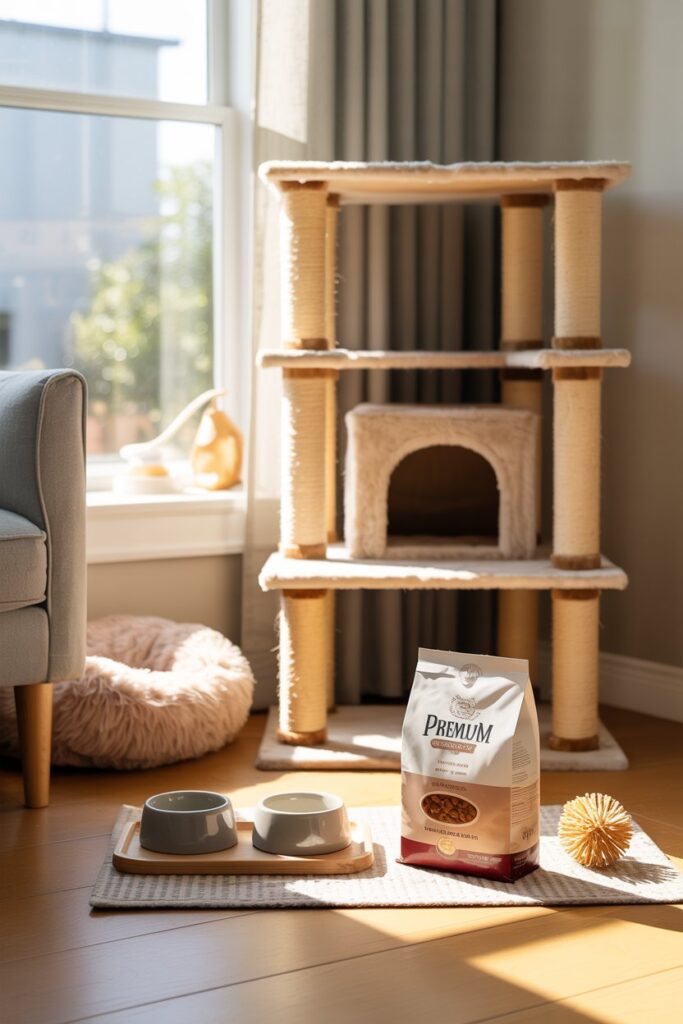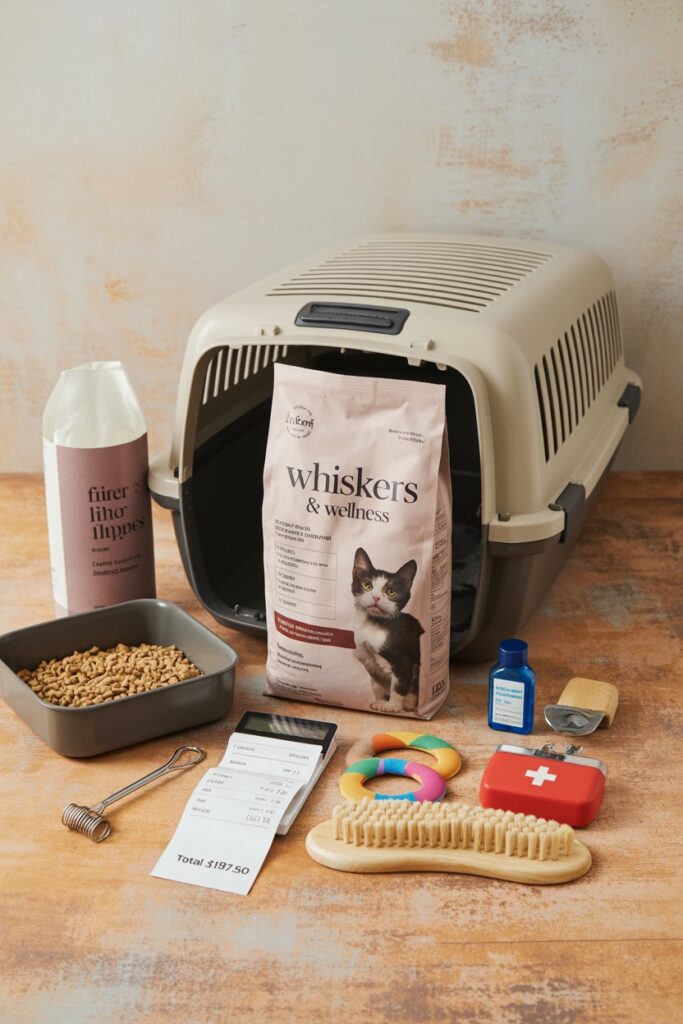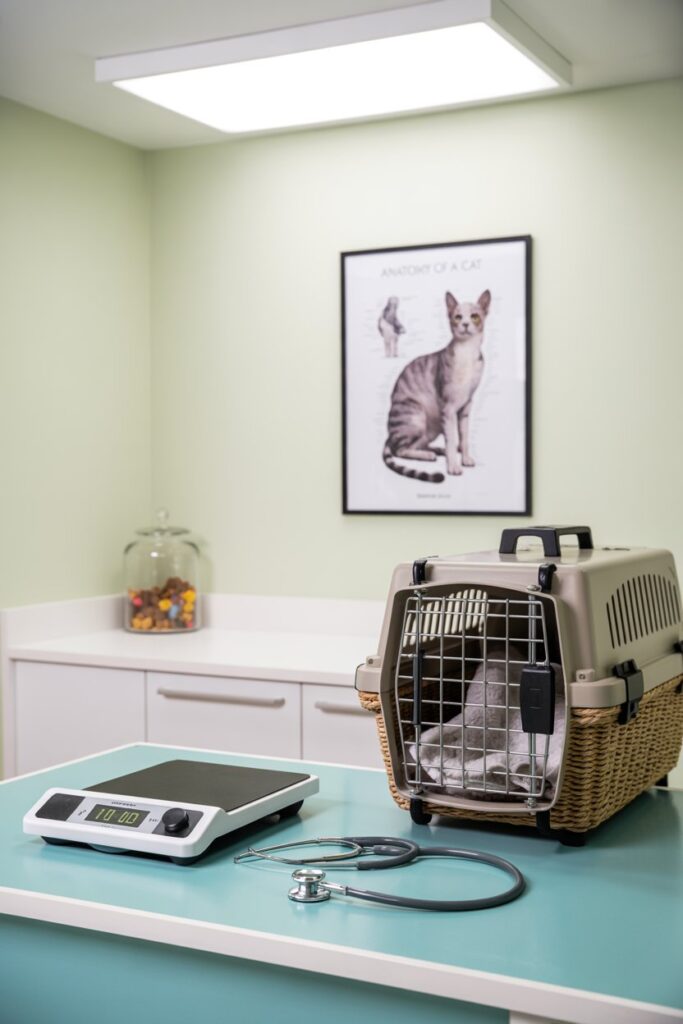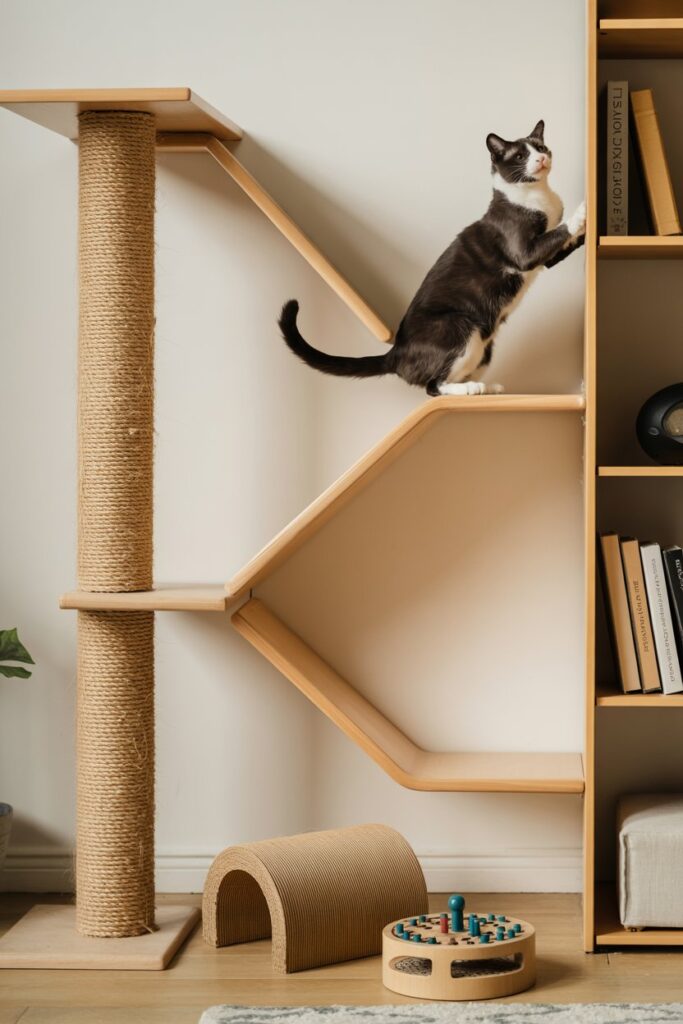Adopting a cat is exciting and rewarding, especially for first-time owners. Cats offer joy, companionship, and a lot of personality. However, they also have unique needs and responsibilities.
Preparing your home and understanding their behavior can help make the transition smoother for you and your new pet.
In this blog, we’ll share essential tips to kickstart your journey as a cat owner.
Whether it’s choosing the right supplies, creating a safe environment, or building trust with your cat, these insights will help you provide the care, love, and attention your furry friend deserves.
Preparing Your Home

Before bringing your new cat home, set up a special spot just for them. Include a comfy bed, a litter box, and dishes for food and water. This will help your cat feel safe and comfortable.
Creating a quiet area for your cat can make their transition smoother. Cats often get stressed in new places. A calm space allows them to retreat and adjust more easily. Include some toys to keep them entertained.
Place the litter box in a quiet, low-traffic area of your home. This helps your cat feel secure when using it. Keep their food and water dishes in a separate area for cleanliness and hygiene.
Check these must-have cat essentials available now on Amazon
Choosing the Right Cat

When adopting a cat, consider your daily routine. Some cats need lots of attention and playtime, while others are more independent. Choose a cat that fits your lifestyle.
Cats have different personalities. Some are social and enjoy being around people, while others prefer a quieter space. Spend time with various cats to find the best fit for your home.
Shelters are excellent resources for choosing a cat. The staff can explain each cat’s temperament and needs. They often know which cats might match your living situation and preferences.
Costs of Cat Ownership

Owning a cat brings regular costs like food and litter. These expenses can add up fast, so budget for them before getting a cat.
Vet visits are another important expense. Cats need check-ups and vaccinations to stay healthy. These visits can be costly but are vital for your cat’s health.
Also, consider the cost of toys and activities. Cats need mental and physical stimulation. This means spending on toys, scratching posts, and other items to keep them happy and active.
Shop trusted cat care products for new owners directly on Amazon
Feeding Your Cat

Cats need a balanced diet with protein, fat, and carbohydrates. Choose cat food that lists meat as the first ingredient. This ensures they get enough protein. Avoid dog food or human food, as it may not provide essential nutrients.
A consistent feeding schedule supports your cat’s health. Most cats thrive on two meals a day, but some may prefer smaller meals more often. Always provide fresh water to keep them hydrated.
Think about your cat’s age and health when selecting food. Kittens require more calories and nutrients for growth. Senior cats might need a diet that suits their aging needs. Consult your vet for tailored advice.
Health and Vet Visits

Regular vet visits are key to your cat’s health. Schedule yearly check-ups to catch issues early. These visits track weight, dental health, and overall well-being. They help keep your cat in great shape.
Know the common health issues in cats, like dental disease, obesity, and parasites. Regular vet visits can spot these problems early and provide the needed treatments. Early detection prevents more serious health issues later.
Vaccinations and preventive care are vital for your cat’s health. Your vet will guide you on necessary vaccinations and preventive measures. This includes flea control and deworming to protect your cat from common diseases and parasites.
Discover beginner-friendly cat supplies you can easily find on Amazon
Bonding with Your Cat

Spending time with your cat helps build a strong bond. Use toys that mimic prey to tap into their hunting instincts. This makes playtime fun and rewarding for both of you.
Establish a routine to help your cat feel secure and loved. Regular feeding times, play sessions, and grooming create stability. This stability is key to a lasting relationship.
Pay attention to your cat’s body language. Knowing when they want to be petted or need space helps you respect their boundaries. This builds trust over time.
Understanding Cat Behavior

Cats use body language to show their feelings. A high, slow-moving tail often means your cat is happy. In contrast, a low, flicking tail can signal irritation or fear. Watching these signs helps you respond well.
Cats also knead by pushing their paws against soft surfaces. This behavior, called ‘making biscuits,’ comes from kittenhood when they kneaded their mothers for milk. It usually shows your cat feels comfortable and safe.
As natural hunters, cats need mental and physical stimulation. Toys that mimic prey, like feather wands or laser pointers, satisfy this instinct. Regular playtime keeps them active and strengthens your bond.
Conclusion
Adopting a cat is rewarding, but preparation is key. First, gather the necessary supplies. Next, understand the costs involved.
Finally, be ready to give your new cat love and care. Being informed will help you and your furry friend build a strong relationship.
How Do I Prepare My Home for a New Cat?
Before bringing a new cat home, create a safe, comfy space. Include a bed, litter box, food, and water dishes. This gives your cat a secure spot to adjust. Keep the area quiet and away from busy foot traffic.
Add toys and scratching posts to keep your cat engaged during the transition. Once they seem comfortable, slowly introduce them to the rest of your home.
What Should I Consider Before Adopting a Cat?
Consider your daily routine, living space, and lifestyle. Some cats need more attention and playtime, while others are independent and low-maintenance.
Picking a cat that matches your lifestyle makes pet ownership smoother and more enjoyable. Also, visit a shelter to meet different cats.
Talk to the staff to learn about their personalities. This helps you find a cat that fits your household.
What Are the Main Costs of Owning a Cat?
Owning a cat involves ongoing costs like food, litter, and toys. These expenses add up, so budgeting is key. Quality food and engaging toys support your cat’s long-term health.
Veterinary care is another big cost. Annual check-ups, vaccinations, and preventive treatments keep your cat healthy and can avoid expensive health issues later.
How Often Should I Take My Cat to the Vet?
Most cats should see the vet once a year for a check-up. These visits cover vaccinations, dental checks, and weight monitoring. Catching health issues early can save money and stress later.
Kittens, seniors, or cats with health conditions may need more frequent visits. Always follow your vet’s advice for your cat’s health needs.
How Can I Bond With My New Cat?
Bonding with a cat needs time, patience, and consistency. Play daily with toys that mimic hunting, like feather wands or laser pointers.
Set a routine for feeding, play, and grooming to help your cat feel secure. Watch their body language and respect their boundaries. This will build trust over time.
